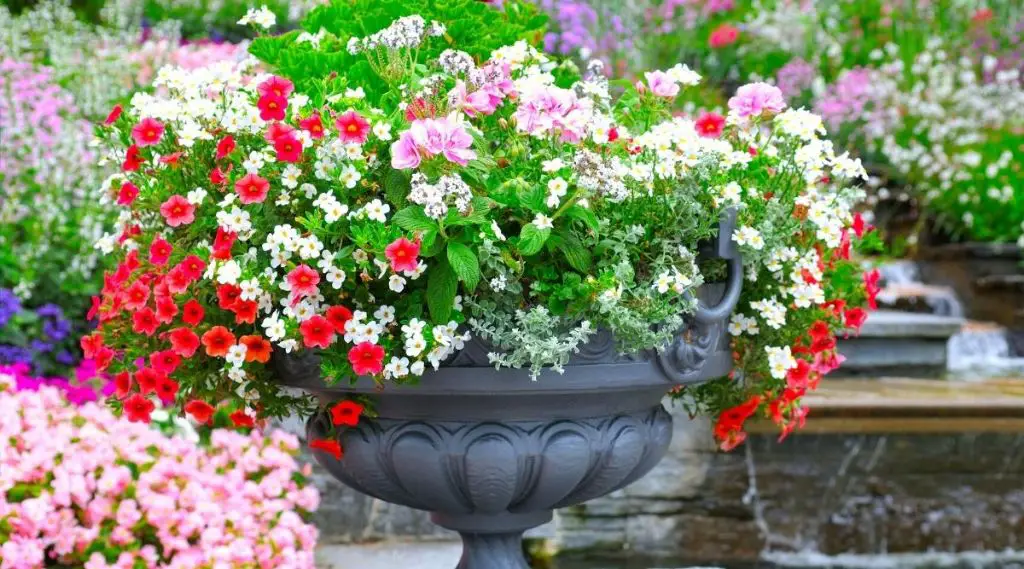Are Ceramic Pots Good For Flowers?
Using ceramic pots for flowers can provide many benefits over other pot materials. Ceramic pots are known for being attractive, durable, and providing great drainage and insulation for plant roots. With proper plant and pot selection, ceramic pots can help create a beautiful and healthy environment for plants to thrive.
This guide will provide an overview of the advantages of using ceramic flower pots as well as considerations for selecting the right ceramic pot for your plants. Key factors like drainage, porosity, weight, insulation, aesthetics, cost, and maintenance will be covered. By understanding the properties and benefits of ceramic pots, you can determine if they are the right choice for displaying your indoor or outdoor flowers and plants.
Durability of Ceramic
Ceramic pots are incredibly durable and can last for many years. According to an article by Life Span of Ceramic Tiles: Understanding Durability and Longevity, ceramic is highly resistant to scratches, stains, and fading. The oxide ceramics used in ceramic pots are very resistant to acids and alkalis, making them long-lasting and able to withstand the elements (Ceramic durability Technology in detail). Unlike other materials like wood or terra cotta that can rot or break down over time, ceramic’s molecular structure makes it incredibly strong and durable.
Drainage
Soil drainage is important for plant health, as plants can be harmed by too much water as well as too little. Ceramic pots are highly porous and allow excess water to drain quickly from the soil. This prevents root rot and other issues caused by soggy soil. Some key advantages of ceramic pots for drainage:
Many ceramic pots come with built-in drainage holes in the bottom. These openings allow excess water to flow out of the pot. While drainage holes can be drilled into other materials like plastic, ceramic pots often come pre-drilled.
The porous nature of ceramic also allows some evaporation through the pot walls. This can help keep soil from getting waterlogged, even if no drainage holes are present.
Ceramic absorbs very little moisture, unlike materials like terra cotta or wood. Water that drains through ceramic doesn’t get held in the pot walls and make its way back to the roots. This also helps soil dry out faster between waterings.
Ceramic pots with attached saucers can provide an overflow reservoir for extra drainage. The drainage water collects in the saucer instead of spilling out onto the floor or table.
So for plants that require well-draining soil and dislike soggy roots, like succulents or cacti, ceramic pots provide an excellent advantage over materials like plastic or glazed pottery.
Sources:
https://chive.com/collections/pots-with-drainage
Porosity
One of the benefits of ceramic pots is that they are porous (How To Choose A Terracotta Pot By Its Porosity). This means the clay contains tiny holes and gaps in its structure that allow air and moisture to pass through. The porosity of ceramic allows air exchange between the soil and atmosphere, which is important for healthy root growth (Clay Body Porosity). Gases like carbon dioxide and oxygen can move in and out of the soil through the walls of the pot. The porosity also allows excess water to seep through and evaporate rather than pooling at the bottom. This helps prevent overwatering and promotes good drainage.
Weight
Ceramic pots tend to be quite heavy compared to plastic or other lightweight pots. A 4 to 8 inch ceramic pot can easily weigh 5-10 pounds (Amazon). This weight makes ceramic pots very sturdy and hard to knock over. The heft of ceramic also helps keep plants anchored and upright, which is useful for taller, top-heavy plants. So the weight of ceramic is a clear advantage in terms of stability over lightweight plastic or foam pots that can blow away in windy conditions (Outdoor Art Pros).
Insulation
Ceramic is known for its excellent insulating properties compared to metals and plastics. This is due to the low thermal conductivity and thermal expansion of ceramic materials (“Thermal conductivity/Thermal insulation (Thermal properties)”). When used as flower pots, the insulating properties of ceramic help maintain stable soil temperatures and protect roots from extreme shifts in temperature.
Compared to metal or plastic pots which conduct heat more readily, ceramic pots act as insulators, keeping the soil warmer in winter and cooler in summer. The porous nature of ceramic also helps regulate moisture levels in the soil. All of this contributes to a more stable growing environment for the plant roots (“Ceramic Insulator: Types, Uses, Features and Benefits”). The insulating properties of ceramic flower pots are therefore highly beneficial for healthy plant growth.
Aesthetics

Ceramic pots come in various decorative styles that can enhance the visual appeal of your plants and flowers. Ceramic planters come in a wide range of shapes, colors, textures, and designs. From classic terra cotta pots to intricate mosaic patterns, ceramic offers endless aesthetic possibilities to complement your garden’s look and feel.
Ceramic’s durability allows for more delicate, ornate, and detailed designs than other materials like plastic or wood. You can find glossy finishes, cracks, speckles, and metallic accents on ceramic pots. Unique glazes and handmade touches give ceramic planters an artisanal, one-of-a-kind appearance. Vintage and antique-inspired ceramic pots are also popular for their classic, old-world charm. Choosing a style that fits your taste is key to creating an eye-catching display.
The variety of ceramic pot styles allows you to match your planters to your garden’s color palette, architecture, or theme. For a coordinated look, you can opt for matching sets of pots in the same shape and color. Ceramic’s versatility provides endless possibilities to find the perfect pots to beautify your garden.
Cost
Ceramic pots range from inexpensive to high-end. Basic ceramic flower pots can be purchased for just a few dollars at home improvement stores like Home Depot and Lowes, with prices ranging from $2-10 depending on size (Home Depot). More decorative ceramic planters with detailed designs or premium materials like stoneware can cost $20-50.
For very large ceramic pots meant for trees or big plants, costs are higher but still affordable – around $100-150 for a 20-30 inch diameter pot (Lowes). High-end ceramic pots from specialty retailers can cost several hundred dollars, but are not necessary for most home gardeners.
Overall, ceramic pots offer an extremely cost-effective option compared to planters made from metal, wood, or other more expensive materials. Their reasonable price makes ceramics a great choice for home gardeners looking to inexpensively accent their yard or porch with beautiful plants and flowers.
Maintenance
Ceramic pots require little maintenance compared to other pot materials. The glazed surface means dirt, dust and mineral deposits wipe right off with a damp cloth. For tougher buildup, fill the pot with warm water and add a spoonful of baking soda. Let it soak for 10-15 minutes, then scrub gently with a soft brush (Source). The ceramic and glaze are durable enough for vigorous scrubbing.
For stubborn stains, create a paste with baking soda and water. Apply the paste and let sit for 1 hour before scrubbing and rinsing. White vinegar or lemon juice can also help remove difficult stains. Avoid using bleach or harsh chemicals that may react with the glaze and damage the pot (Source). With proper care, a quality ceramic pot can last for years.
The only maintenance beyond cleaning is watching for cracks. Discard any pots with cracks as they will allow water to leak out. Otherwise, ceramic pots are long-lasting and low maintenance for housing plants.
Conclusion
Ceramic pots offer several benefits for growing flowers that make them a great choice. Ceramics are very durable and long-lasting, able to withstand years of outdoor use and temperature fluctuations. Their porosity allows air and moisture to reach plant roots while also providing insulation. Ceramic pots come in a wide array of shapes, sizes and colors to fit any style. They are also affordable and easy to maintain. The durability and drainage of ceramic makes it an ideal material for growing healthy, thriving flowers.

